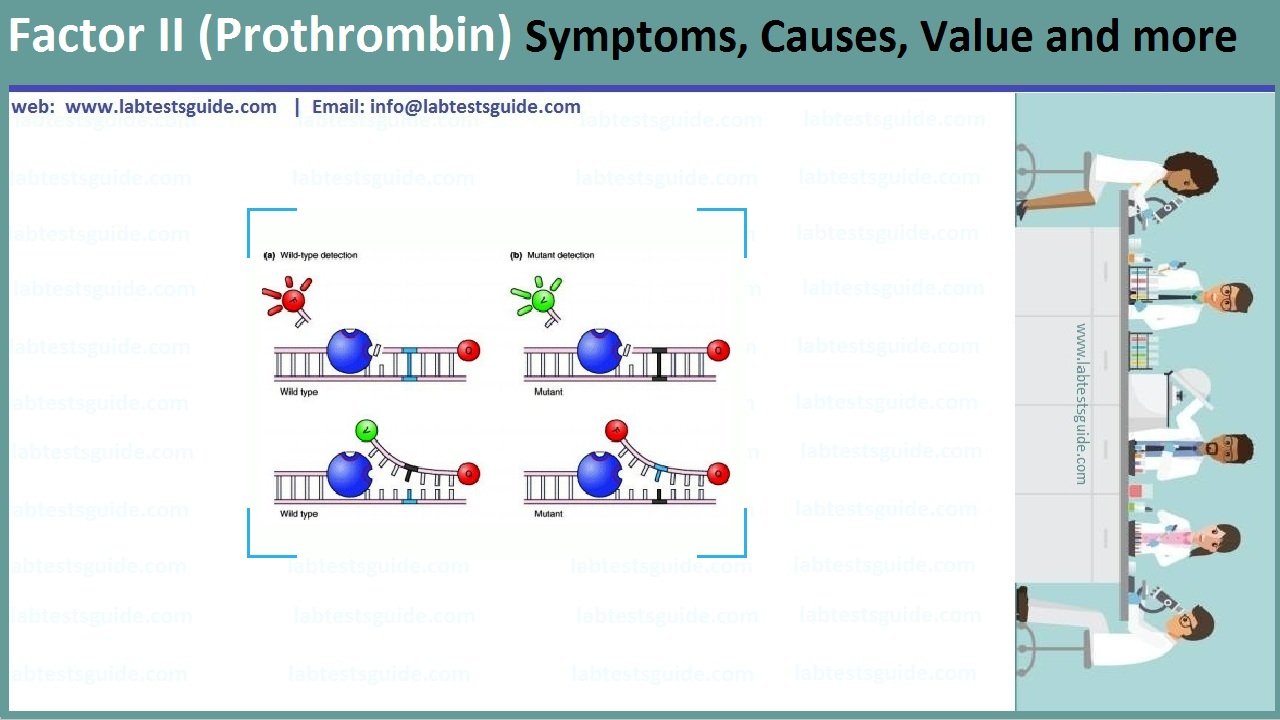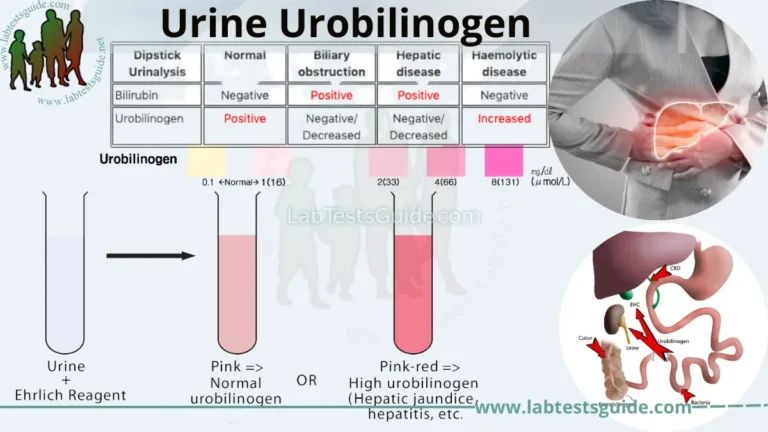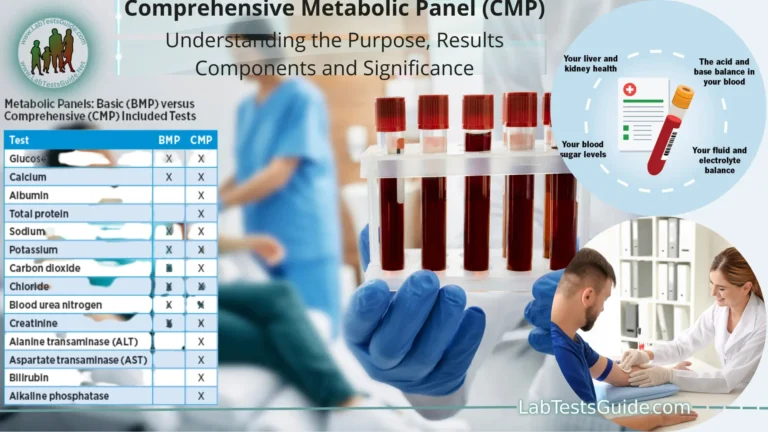Coagulation factor II, or prothrombin, is a vitamin K-dependent proenzyme that works in the blood coagulation cascade. Factor II deficiency is a rare, inherited or acquired bleeding disorder with an estimated incidence of one case per 2 million inhabitants. Consequently, they generally have little normal prothrombin or almost normal dysfunctional prothrombin production.
Factor II deficiency is a very rare blood clotting disorder. It results in excessive or prolonged bleeding after an injury or surgery. Factor II, also known as prothrombin, is a protein produced in the liver. It plays an essential role in the formation of blood clots. It is one of the 13 clotting factors involved in the proper formation of blood clots.

Also Known as: Coagulation Fators, Factor Assays, Blood Clotting Factors, Clotting Factors, Factor I, Factor II, Factor III,Factor IV, Factor V, Factor VI, Factor VII, Factor VIII, Factor IX, Factor X, Factor XI, Factor XII,Factor XIII
Related Tests: Prothrombin Time (PT), Partial Thromboplastin Time (PTT), Fibrinogen, Activated Partial Thromboplastin Time (APTT)
Symptoms of Factor II Deficiency :
In cases of severe factor II deficiency, symptoms may include:
- Umbilical cord bleeding at birth
- Unexplained bruising
- Abnormal bleeding after giving birth, having surgery, or being injured
- Prolonged nose bleeds
- Bleeding from the gums
- Heavy or prolonged menstrual periods
- Internal bleeding in your organs, muscles, skull, or brain (relatively rare)
Factor II Deficiency Causes:
Factor II deficiency can be inherited. It can also be acquired as a result of illness, medications or an autoimmune response.
Hereditary factor II deficiency is extremely rare. It is caused by a recessive gene, which means that both parents must carry the gene to transmit the disease. Currently there are only 26 documented cases of hereditary factor II deficiency in the world.
Acquired factor II deficiency is usually caused by an underlying condition, such as:
- Vitamin K deficiency
- Liver disease
- Medications such as anticoagulants (e.g., warfarin or Coumadin)
- Production of autoimmune inhibitors that disable healthy clotting factors
How to Diagnose:
The diagnosis of factor II deficiency is based on your medical history, any family history of bleeding problems and laboratory tests. Laboratory tests for bleeding disorders include:
- Factor trials: these tests verify the performance of specific factors to identify missing or poor performance factors
- Factor II trials: to measure the levels of factor II in the blood
- Prothrombin time (PT): to measure the levels of factors I, II, V, VII and X depending on how quickly the blood coagulates
- Partial prothrombin time (PTT): to measure the levels of factors VIII, IX, XI, XII and von Willebrand factors based on how quickly the blood coagulates
- Other tests for the underlying conditions that may be causing your bleeding problems
Sample Required:
- The plasma is needed, take 5 ml of venous blood and add sodium citrate as the anticoagulant.
- Perform the assay immediately or as soon as possible.
- For factors II, V, VII, and X, place the citrated plasma on ice immediately, and the sample is stable for 2 hours.
- Freeze if it is delayed >2 hours.
Test Preparation Needed:
No need any Preparation for this sample.
Normal Values:
- 10 to 15 mg/dL
The Decreased Level Is Seen In:
- Vit.K deficiency.
- Liver disease.
- Oral anticoagulants.
- Circulating inhibitor or lupus-like anticoagulants.
- Decreased synthesis.
List of factors:
The table lists 13 of 20 different coagulation factors involved in the coagulation cascade that are vital to normal blood clotting.
| Coagulation Factor | Other Common Name |
|---|---|
| Factor I | Fibrinogen |
| Facto II | Prothrombin |
| Factor III | Tissue factor or thromboplastin |
| Factor IV | Calcium |
| Factor V | Proaccelerin (Labile factor) |
| Factor VI | Unassigned – old name of Factor Va |
| Factor VII | Proconvertin (Stable factor) |
| Factor VIII | Antihaemophilic factor A, Antihaemophilic globulin |
| Factor IX | Antihaemophilic factor B, Plasma thromboplastin component, Christmas factor |
| Factor X | Stuart-Prower factor |
| Factor XI | Plasma thromboplastin antecedent, Haemophilia C, Rosenthal syndrome |
| Factor XII | Hageman factor |
| Factor XIII | Fibrin stabilising factor, Laki-Lorand factor |
Normal Values:
| Factors | Normal Values |
|---|---|
| Factor I (Fibrinogen) | Adult = 200 to 400 mg/dL Newborn = 125 to 300 mg/dL |
| Factor II (Prothrombin) | 10 to 15 mg/dL |
| Factor III (Thromboplastin) | |
| Factor IV (Ionized calcium) | 4.60 to 5.08 mg/dL |
| Factor V (Labile Factor) | 5 to 10 mg/dL |
| Factor VI | Not existing |
| Factor VII (Stable factor) | 5 to 20 mg/dL |
| Factor VIII (Antihemophilic factor) | 30 mg/dL |
| Factor IX (Christmas factor) | 30 mg/dL |
| Factor X (Stuart factor) | 8 to 10 mg/dL |
| Factor XI (Plasma thromboplastin) | 25 mg/dL |
| Factor XII (Hageman factor) | |
| Factor XIII (Fibrin-stabilizing factor) | |
| Von Willebrand factor |
Diseases Leading To Coagulation Factor Deficiency:
| Disease | Factor deficiency |
|---|---|
| Disseminated intravascular coagulopathy | I, V, VIII |
| Liver diseases | I, II, V, VII, IX, X, XI |
| Autoimmune diseases | VIII |
| Congenital deficiency | I, II, V, VII, VIII, IX, X, XI, XII |
| Vit K deficiency | II, VII, IX, X, XI |
| Heparin therapy | II |
| Warfarin therapy | II, VII, IX, X, XI |
| Fibrinolysis | I, V, VIII |
Possible References Used





